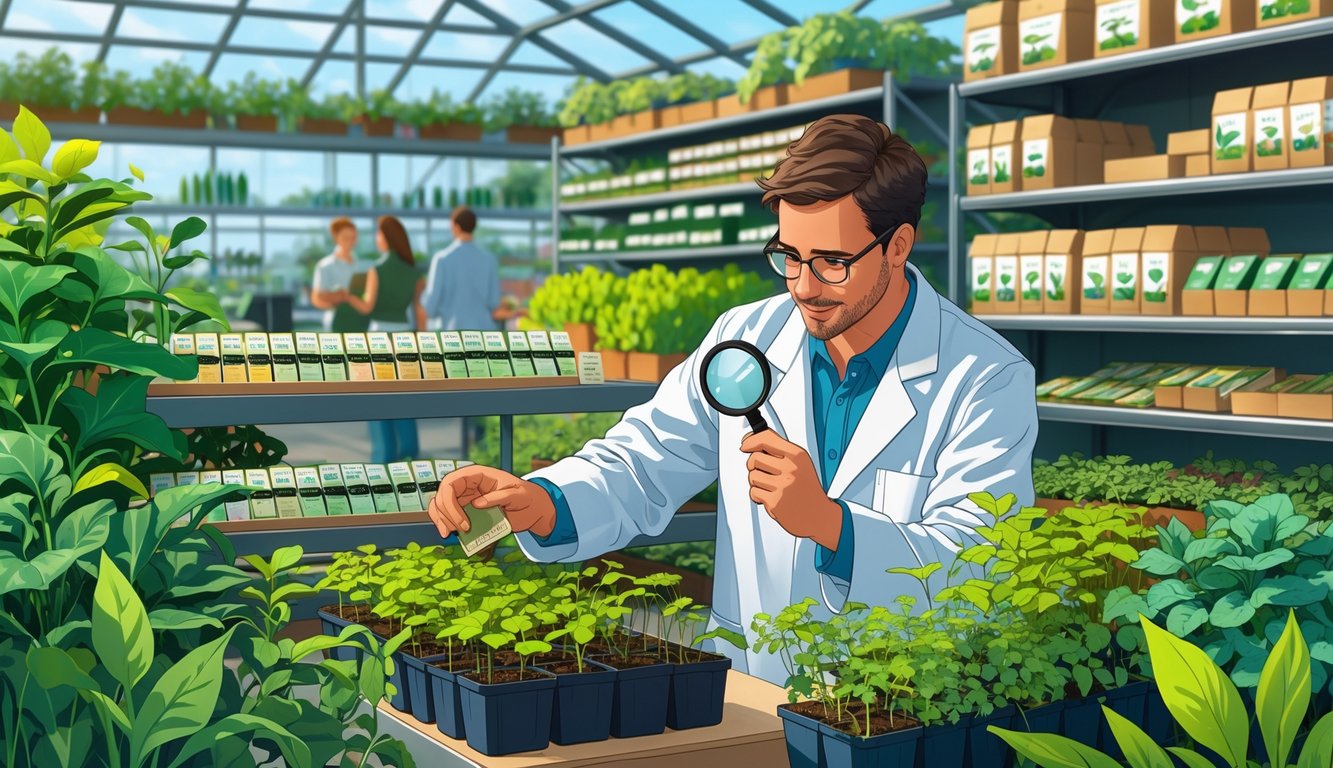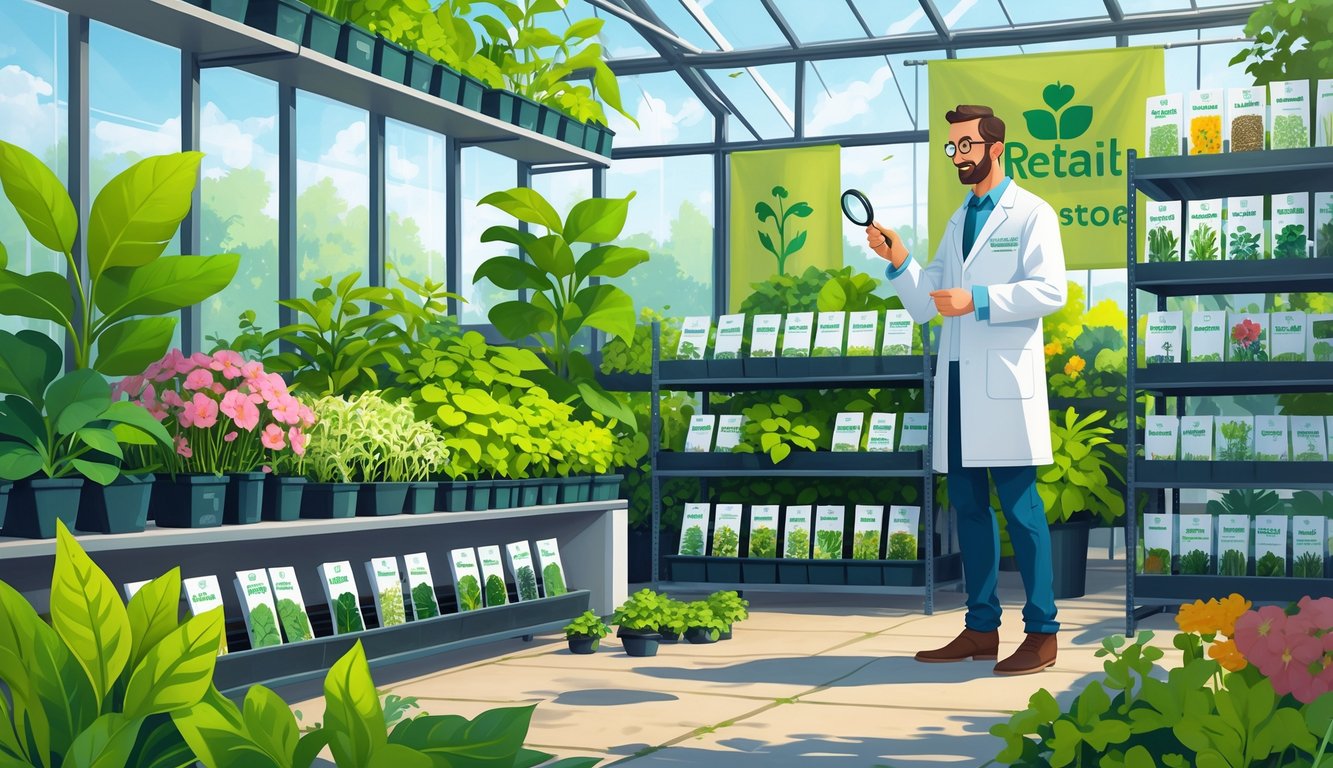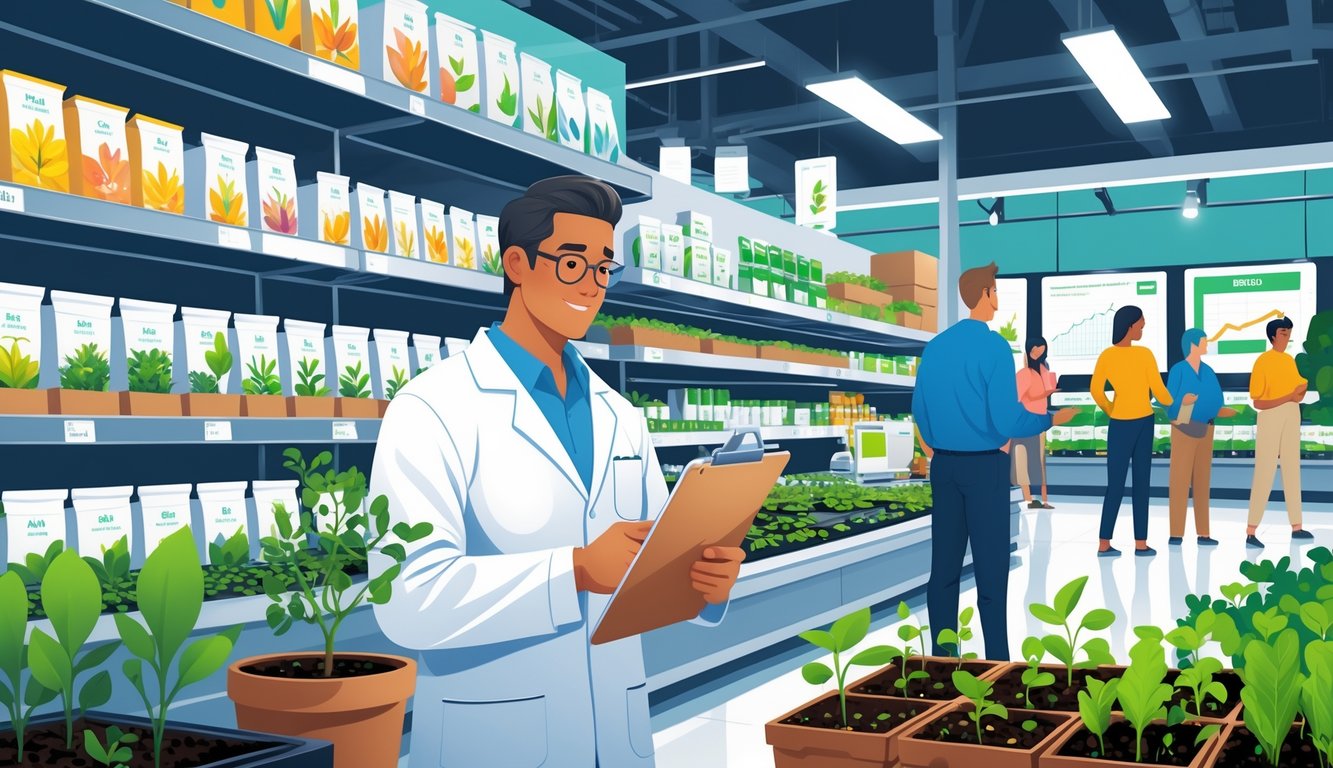
So here’s a thing I didn’t expect: apparently, everyone’s now scrambling for these “botanist-approved” seed packs, and—no exaggeration—big-box stores are basically fighting over them. I went looking for Purple Cherokee tomato seeds last week and, nope, not a single pack left. What’s even happening? Last year, I blamed TikTok, but now it’s actual horticulturists name-dropping varieties, and demand just shot through the roof. UK seed sales jumped over 70% for some veggies—saw the numbers myself, and even the BBC’s harping on about how searches for heritage and rare seeds spiked. Stuff that used to collect dust is suddenly gold.
Here’s the kicker: while the big stores are busy hunting for “the next biofortified carrot” or whatever “living fence” starter is trending, these plants aren’t fixing grocery shortages. Seriously, nobody’s lining up for limp lettuce at the store. Meanwhile, managers at the chains keep quoting the Royal Horticultural Society or cold-calling tiny seed companies at weird hours. I’m still stuck on the fact that online seed shops are flashing waitlist banners like it’s 2020 all over again. And me? I’m just muttering about the same five tomato varieties I’ve been growing since forever.
People want “lab-tested germination rates” and “expert genetics,” fine, but now even wildflower mixes are vanishing from reputable sites—Gardens Illustrated’s favorites, for example. And don’t get me started on the influencer nonsense about “instant biodiversity.” Paxton from SeedWorld claims living fences are all the rage, but I haven’t seen a hawthorn hedge last through a city summer in ages. So what’s with the sudden retailer panic, and will they even have what anyone actually wants next month? I have no idea. I’ll just keep refreshing those backorder pages and hope for the best.
Understanding Botanist-Backed Seed Picks

Seed packets haven’t really changed in decades, but now I’m standing in the hardware aisle, squinting at some “botanist-backed” badge that’s barely legible, and—of course—they’re all sold out. Retailers are sweating because this isn’t about pretty wildflower pics or heirloom tomato names anymore; it’s all about hard data, peer review, and germination stats. When did gardening get so nerdy?
What Sets Botanist-Backed Seeds Apart
Marketing copy makes my eyes glaze over, but if a PhD is hyping up a certain sweet corn, I’ll skip the generic “Gardeners’ Special.” Retailers usually care about shiny packaging, but now it’s the numbers—actual germination percentages right there on the packet—that are flying off shelves.
I once called my local extension office in total confusion—do these “botanist-approved” melon seeds mean anything? Turns out, the organizations want third-party tests. Non-GMO verification by the Non-GMO Project is basically standard. I see crazy-detailed notes: soil temperature, sowing depth (not just “scatter and hope!”). There are growers on forums tracking lot numbers and shelf life, and apparently, seeds last up to four years if you keep them dry and cool. Who knew?
Also, nobody talks about how heavy these info-packed seed packets are compared to the supermarket “seed bomb” kits. Is it all the data? Maybe I’m just imagining things.
The Science Behind Seed Recommendations
If you’ve read enough seed catalogs, you know—adjectives first, facts second (if ever). Botanists flip that script. Suddenly, every tomato hybrid comes with trial results, climate notes, and genetic backstory. I found a packet from the 2023 Oregon trial once—actual growth charts on the back. Not that I understood half of it.
Most of these picks come from test plots in weirdly specific microclimates, not just the usual USDA zones. Experts brag, “95% sprout rates in cold springs!”—and, okay, that’s helpful, even if I ignore half the “best for northern gardens” hype. But root rot resistance? That’s something I actually check before planting anything.
Sometimes, two botanists can’t even agree on which lettuce to back. The packet still tells me how deep to plant, how long seeds last, and—honestly—who checks “days to maturity” anyway?
Key Benefits for Gardeners
Why should I care? Sometimes I don’t, especially when the garden center’s packed and nobody knows a thing about bean blight. But when I find a packet verified by a university extension’s master gardener, it’s kind of a relief. Bot-backed seeds usually list pest resistance, nutritional info, and yield stats, not just “heirloom” fluff.
The best part? The sowing instructions are idiot-proof: “Thin seedlings to 7 inches when second true leaves appear.” Both metric and imperial, thank you—otherwise, I’d mess it up. Sometimes they even tell you if a basil is for eating or just for companion planting. Saved me from accidental pesto fails more than once.
If a seed line gets more than one independent endorsement—the Botanical Interests tag has coverage info, sowing depth, row spacing, and sometimes even drawings—I’ll trust that over whatever’s by the checkout. Never seen “trusted by botanists” and “for window boxes” on the same packet, but someone’s probably tried it.
Factors Driving Retailer Demand

I started chasing down bean varieties nobody cared about last year and suddenly noticed barcodes on packets like they’re trophies. Weird flex, right? Shoppers aren’t just grabbing tomato seeds anymore; something’s shifted and now every big outlet’s desperate to keep up.
Trends in Consumer Preferences
Scrolling through plant catalogs, my phone won’t stop buzzing about “living fence” hedges—privacy plants are suddenly a big deal. SeedWorld says 86% of new homes are tiny, so people want green walls, not just a couple of sad petunias. Doesn’t matter if you’re in a closet-sized yard or growing basil for pizza; seed orders haven’t dropped since the pandemic. SeedWorld’s got the numbers. My inbox is a disaster—retailers want “botanist-approved” everything, hoping that credibility stamp will boost sales, since every other crop input is tanking. It’s not just one age group either—everyone wants Instagram-friendly veggies, so this isn’t a blip.
Still, I catch big box stores stretching the truth on sustainability claims. Suddenly, corn is pushing out soybeans for 2025, and shelf stock changes overnight, at least according to CropLife’s seed market projections. Experts say prices might wobble, but nobody’s pretending this is about cheap seeds anymore—it’s about trust and options.
Sustainability and Eco-Conscious Shopping
Every third seed ad sounds like an eco-manifesto now. I’m constantly double-checking “climate resilience” and “heirloom” mashed together like magic words for anxious shoppers. Sales reps swear customers want less plastic, more drought tolerance, and after last year’s weird weather, I kind of believe it. Retailers act like they invented compostable packets, but customers are the ones pushing for it—local gardening clubs are demanding traceable origins and hybrids that can handle wild temperature swings.
One ag store told me organic and non-GMO demand doubled—pandemic panic just turned into climate panic. USDA says high-yield, stress-adapted seed sales jumped. Sometimes buyers just want the eco-certification sticker, even if it’s more expensive. It’s not just the “green” crowd, either. Half the time I can’t even decode the technical lingo on the new displays, but people buy them anyway. Some of this makes zero sense, but it’s happening.